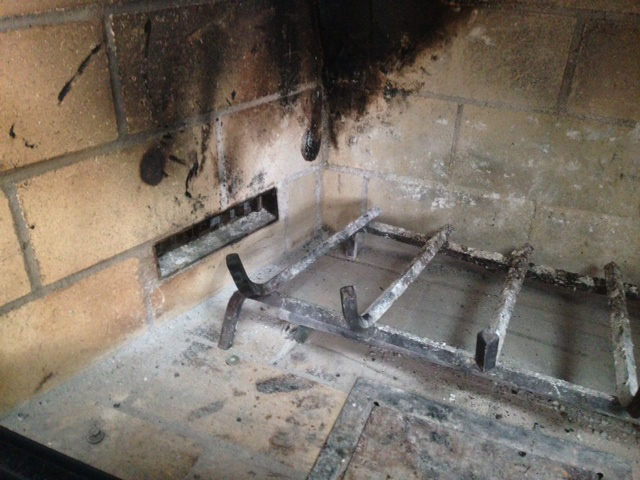
by blogediter | Feb 7, 2018 | Gas Logs
Fresh Air Vent
Q: I have a fairly new home built in 2004. I’ve noticed that my living room area is colder than the rest of the house. I always thought it was because of the patio door or maybe the vaulted ceilings and it’s a large room. There is a fireplace I never use. I just noticed today there is a draft coming through the bottom where the controls are and the tile around the bottom is ice cold. This explains why my toes are so cold when I sit on the couch and watch tv. Is there anything I can do about this? I might just put some kind of insulation sheet in front of the whole thing. thanks for your help – JP
A: JP, There is a couple of different sources that could be letting in cold air. If this is a direct vent fireplace that is mostly sealed off from access and “breaths” through tubes or pipes that go through your outside wall, then it is likely bad or no insulation around the gas lines or venting pipes. This can be remedied easily once you find the pipes. If this fireplace has a regular stack chimney and the hearth is accessible to you, it could be that the fireplace damper is clipped open or disabled in some way. Gas log fireplaces in most states have to have disabled or clipped open dampers due to fire code. The reason for this is the county doesn’t want you lighting a gas fireplace without opening the damper since this can start a fire or asphyxiate you and everyone in the home. Another possibility, in this case, could just be a worn out damper. There is a blog entry about this: http://www.chimneyballoonusa.com/blog/2007/01/welcome_to_the_.html If you find that the cold air source is coming from a disabled, or old and crusty damper and inexpensive insulation option is a Chimney Balloon. They can be bought through the manufacturer at http://www.chimneyballoon.us. They are an inflatable plug that stops air passage. Good luck finding the cold air entry point, I know from experience that cold drafts like that can be uncomfortable. – Jason
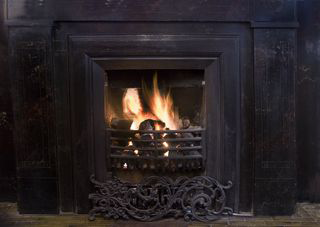
by blogediter | Jan 15, 2018 | Gas Logs
Q: I know vented gas log fireplaces are inefficient to run, but how much does an hour of use cost if you are burning propane in an average vented gas log? – DR
A: Hi Dr, Well the cost will depend upon your cost of propane and the BTU of your device but let’s make an estimate:
Say you have a 45,000 BTU unit and Propane costs $3 per gallon. The cost would be about $1.50 per hour to operate it. (Since a 90,000 BTU unit will consume 1 gallon in an hour)
Keep in mind as well that you are getting very little if any heat gains from this fuel consumption. That is the travesty of vented gas logs. – Jason
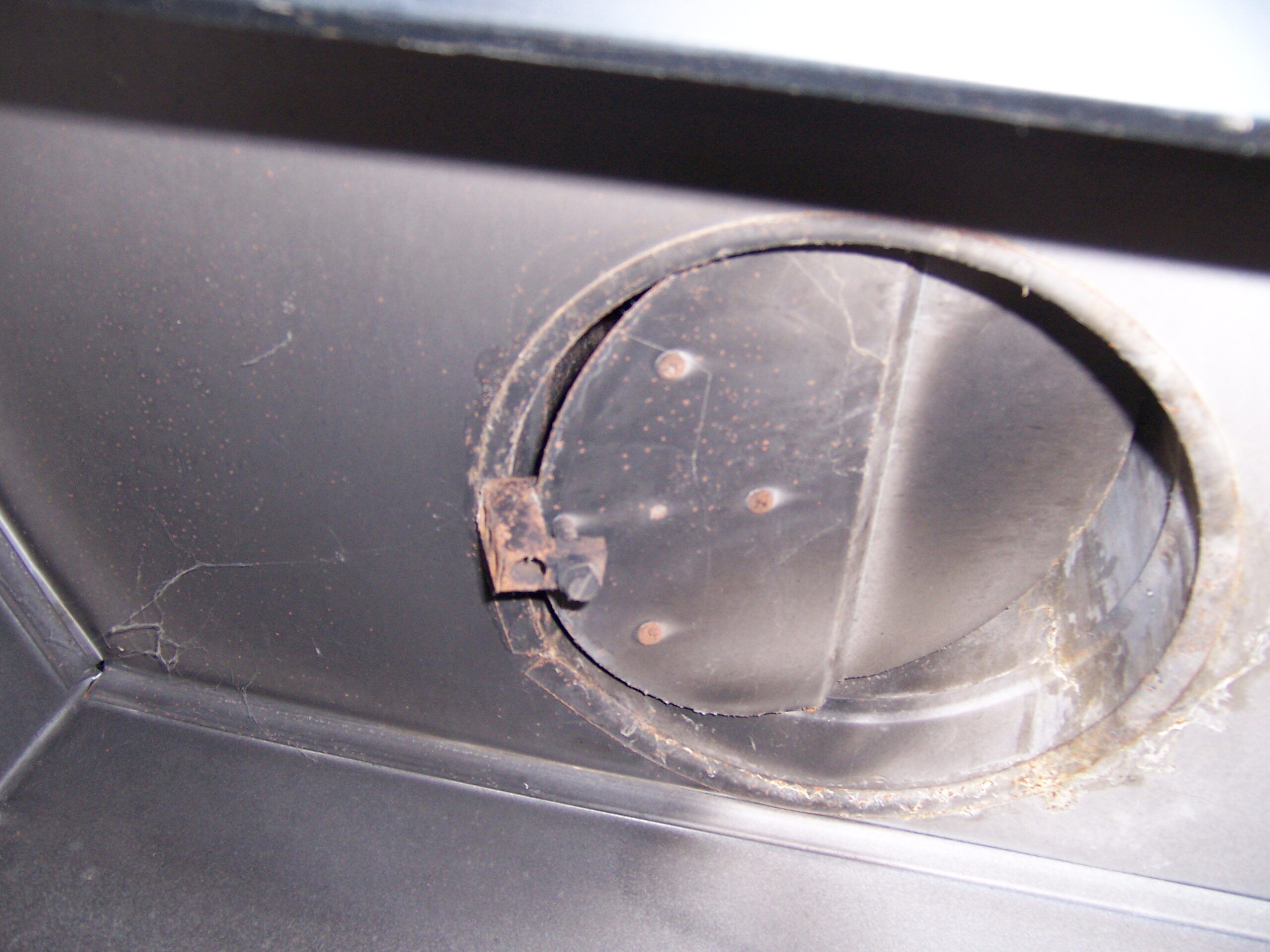
by blogediter | Jan 9, 2018 | Gas Logs
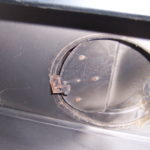 Q: I went to install my chimney balloon over my gas log fireplace and I found a clip that was holding my fireplace damper open. I removed it and now the damper works fine.
Q: I went to install my chimney balloon over my gas log fireplace and I found a clip that was holding my fireplace damper open. I removed it and now the damper works fine.
A: The clip you found was a damper restrictor. However keep in mind that it is against most state codes to have a gas log fireplace without a damper restrictor in place. I would check with your county before you go and seal up with your metal damper. This is an issue that can void some home owners insurances, so it is very important to stay within this code if it applies to your state.
The reason for this code is gas logs burn very clean and you can easily start a fire in the fireplace and forget to open the damper for quite some time while the fire burns on…This creates a buildup of carbon monoxide and heat that can start a fire (starting with your mantel) or the carbon Monoxide can overcome you and others in your home. The downside of this code is that having a damper restrictor on your damper is like having a window cracked open all year round.
If I were you I would call the County Building Code Office or call a fireplace retailer and ask them first about the codes in your area.
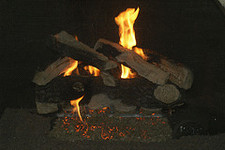
by blogediter | Jan 4, 2018 | Gas Logs
Q: I went to install my Chimney Balloon over my gas log fireplace and I found a clip that was holding my fireplace damper open. I removed it and now the damper works fine.
A: The clip you found was a damper restrictor. However, keep in mind that it is against most state codes to have a gas log fireplace without a damper restrictor in place. I would check with your county before you go and seal up with your metal damper. This is an issue that can void some homeowners insurances, so it is very important to stay within this code if it applies to your state.
The reason for this code is gas logs burn very clean and you can easily start a fire in the fireplace and forget to open the damper for quite some time while the fire burns on…This creates a buildup of carbon monoxide and heat that can start a fire (starting with your mantel) or the carbon Monoxide can overcome you and others in your home. The downside of this code is that having a damper restrictor on your damper is like having a window cracked open all year round.
If I were you I would call the County Building Code Office or call a fireplace retailer and ask them first about the codes in your area. Here is a great article on this matter: http://www.washingtongasliving.com/fireplace/installation.cfm
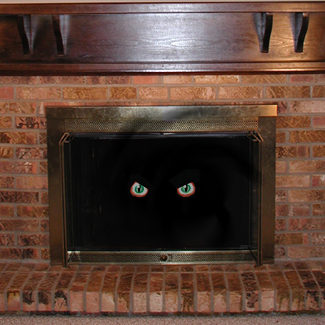
by blogediter | Aug 21, 2017 | Chimney Problems, Gas Logs
If you have been a reading my blogs you have probably gathered that I am not a big fan of retrofit gas logs. I don’t like vented or vent free gas logs, but it is for two different reasons:
Vented Gas Logs:
These are usually retrofitted into wood burning fireplaces. They are sold as an easier way to enjoy your fireplace, without the inconvenience of wood. To a degree they deliver on that promise, but there is more that they deliver.
- When you install a gas log you must remove the damper or have it clipped open all the time. This is a bad deal for obvious reasons. This means you have a big hole in your home all the time, and you cant close it. It doesn’t matter if your fireplace is on or not that flue has to remain open and that allows for outside air to come in.
- Most of the heat that is generated by the gas logs burning goes right up the flue. Unless you have a special kind of heat exchanger in your fireplace, that gas you are burning is throwing its heat right up the flue with the fumes. All you will get is some paltry radiant heat.
- Older gas logs have pilot lights. They are the drippy faucets of the gas world. 24/7 you are trickling fuel down the drain.
Vent-Free Gas Logs:
I could go on and on about vent free gas logs. I really do not like these things. You are burning gas and venting all the heat and fumes into the home. This is great for heating, but what about air quality?
Vent-less gas log manufacturers swear by their newer products and say they are safe and do not elevate CO or CO2 levels. They say they even build in CO sensors that will shut the vent free heating device off if it malfunctions and causes a CO backup.
However, The University of IL (Urbana/Champagne) in 2008 introduced results of a study they conducted on 30 homes over a 3 years period to see how vent free gas appliances do effect the homes air quality. The complete study is available on-line, but it is a bit long winded, so I will give you a brief summary of what I found most interesting about it.
- NO2 is the gas most likely to exceed acceptable levels when operating a vent free device.
- The safety shutoff sensor on vent free units does not sense for NO2 levels.
- CO occasionally exceeded the 8hr maximum in tests where they was a long continuous run time or in a tightly enclosed space.
- The EPA says “Avoid installing un-vented (or “vent-free”) space or water heating appliances“
Now we all know that Carbon Monoxide (CO) is not something we want in our homes but (NO2) Nitrogen Dioxide was new to me so I had to look up the side effects. Quite frankly, I found the side effects to be less than desirable as well.



 Q: I went to install my
Q: I went to install my 
